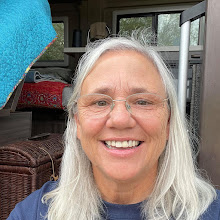* 10% wage increase on tonnage rates and a day scale corresponding with Wyoming
* Enforcement of the eight hour work day law
* Payment for "dead work" (laying track, timbering, handling impurities, etc.)
* The right to elect their own check-weighmen without company interference
* The right to trade at any store, and choose their own boarding places and doctors
* Enforcement of the state mining laws and abolition of the company guard system
The mine operators, led by the Rockefeller controlled Colorado Fuel & Iron Company, appealed to Colorado Governor Elias M. Ammons, who obliged by sending in the National Guard to keep the mines operating. After being evicted from company owned shacks, miners and their families set up tent colonies in the nearby hills and continued the strike. The United Mine Workers of America (UMWA) leased the land, provided tents, and even issued a small allowance. Ludlow was the largest tent colony, with about 200 tents and 1,200 people.
On April 19, 1914, Greek Orthodox Easter - the Greeks at Ludlow roasted a lamb and prepared a feast for the entire colony. During the day, the colonists and the militia played friendly games of baseball. The celebration lasted long into the night.
9:00 a.m. on April 20, 1914 an explosion triggered an exchange of gunfire between the miners and the militia. The National Guard opened machine gun and rifle fire on the tent colony in Ludlow. Armed miners defended their positions, while women and children hid in the tents in pits they had dug. The fighting raged for the entire day. The militia was reinforced by non-uniformed mine guards later in the afternoon. At dusk, a passing freight train stopped on the tracks in front of the Guards' machine gun placements, allowing many of the miners and their families to escape to an outcrop of hills to the east called the "Black Hills." By 7:00 p.m., the camp was in flames, and the militia descended on it and began to search and loot the camp.
Louis Tikas, the camp leader had remained in the camp the entire day and was still there when the fire started. Tikas and two other men were captured by the militia. Tikas and Lt. Karl Linderfelt, commander of one of two Guard companies, had confronted each other several times in the previous months. While two militiamen held Tikas, Linderfelt broke a rifle butt over his head. Tikas and the other two captured miners were later found shot dead. Their bodies lay along the Colorado and Southern tracks for three days in full view of passing trains. The militia officers refused to allow them to be moved until a local of a railway union demanded the bodies be taken away for burial.
The bodies of the two women and eleven children were found in a pit dug under a tent where they had been hiding - they had either suffocated or burned to death.
Ludlow Massacre Monument


Ludlow is now a ghost town.









1 comments:
Having grown up in a "staunch" Republican household, people such as the Rockefellers were "idolized" by my Grandfather and Father.
It wasn't until sometime during my "tours of duty" in Southeast Asia,as a very young man, that I started even "questioning" the "history" of what I had been brought up believing.
Now, 40 some years later, I hold a very strong hatred for just what Corporate Greed and Power has been doing since the earliest days of it's inception...and what it always will do...enslavement and/or anhilation of anyone/anything that gets in it's way to "profits".
Thank you for the History Lesson...I was totally unaware of that particular "example"...
Post a Comment